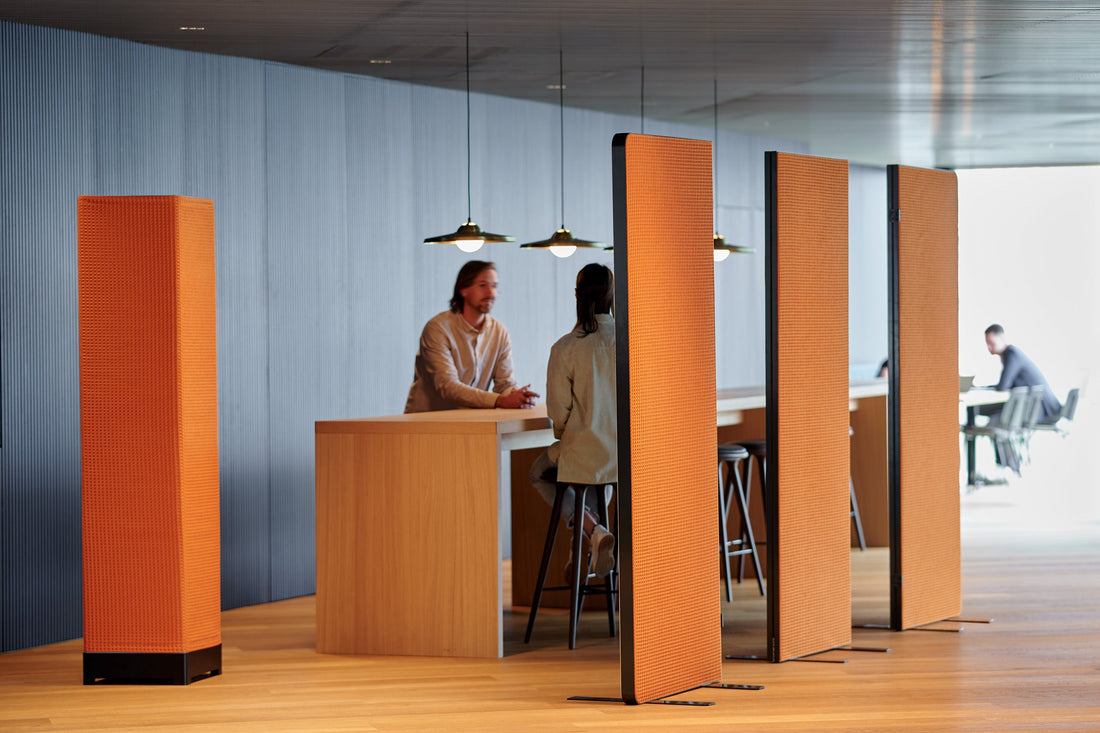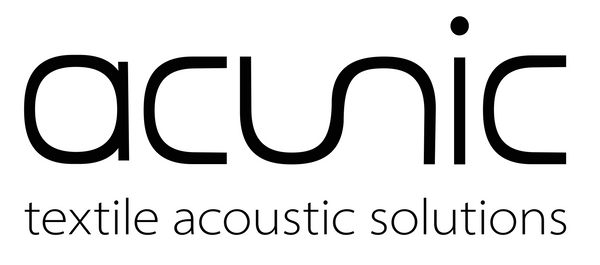
Creating Healthier Workspaces with Non-VOC Materials
Share
As health and wellness become paramount in modern workspace design, industry professionals - including interior designers, architects, acoustic consultants, and textile suppliers - are increasingly prioritising materials that support better indoor air quality. A critical component in achieving healthier spaces is the use of Non-VOC (Volatile Organic Compounds) materials. This comprehensive guide explores the critical role these materials play in creating environments that enhance occupant well-being, productivity, and long-term health.
Understanding VOCs and Their Impact
Volatile Organic Compounds, or VOCs, are organic chemicals commonly found in many conventional building materials, including paints, adhesives, textiles, flooring, and furniture. VOCs evaporate at room temperature, releasing harmful emissions that negatively impact indoor air quality. Short-term exposure can lead to headaches, dizziness, and respiratory irritation, while long-term exposure can contribute to chronic health issues such as asthma, allergies, and other respiratory diseases.
Given that the average person spends around 90% of their time indoors, particularly in work environments, addressing indoor air quality through the selection of appropriate building materials becomes essential.
The Growing Demand for Healthier Workspaces
Today’s businesses increasingly recognise that employee health and well-being directly correlate to productivity, job satisfaction, and retention. This acknowledgment has driven a shift toward healthier workspaces, where Non-VOC materials play a central role. Forward-thinking architects and designers are proactively recommending these solutions to their clients, emphasising the long-term benefits of cleaner air and healthier interiors.
Benefits of Using Non-VOC Materials
Enhanced Indoor Air Quality
Non-VOC materials drastically reduce or eliminate harmful chemical emissions, significantly enhancing indoor air quality. Improved air quality leads directly to better respiratory health, clearer thinking, increased comfort, and overall workplace satisfaction. This makes Non-VOC materials particularly beneficial for environments such as offices, schools, hospitals, and childcare facilities, where occupant health and safety are of paramount importance.
Improved Employee Productivity
Research consistently demonstrates that healthier workplaces foster higher productivity. Spaces designed with Non-VOC materials help reduce instances of Sick Building Syndrome (SBS)—a condition characterised by symptoms like headaches and fatigue, attributed to poor indoor environmental quality. By reducing these occurrences, employees experience fewer health-related absences and report higher levels of concentration and productivity.
Long-Term Health and Financial Savings
Investing in Non-VOC materials may involve slightly higher upfront costs but yields significant long-term savings by reducing healthcare costs, lowering absenteeism, and enhancing employee retention. Healthier buildings reduce the long-term operational expenses associated with managing air quality problems or undertaking costly remediation processes.
Integrating Non-VOC Solutions in Acoustic Design
Effective acoustic management is critical to workspace functionality, reducing stress levels, enhancing focus, and boosting productivity. Non-VOC acoustic textiles provide a unique solution that merges sound absorption and health-conscious design, ensuring environments that are both comfortable and conducive to productivity.
Advanced Non-VOC Acoustic Textiles
Innovative textiles featuring advanced polywoven 3D technology are engineered to deliver superior acoustic performance with up to 90% sound absorption, making them ideal for offices, educational institutions, and healthcare facilities. These materials achieve impressive sound control without compromising indoor air quality or aesthetics, meeting stringent health, safety, and design standards.
Customisation Without Compromise
Interior designers and architects value flexibility and creativity in their projects. Non-VOC acoustic textiles offer unlimited customisation opportunities, from color matching to bespoke UV printing, enabling professionals to meet demanding aesthetic and branding requirements without sacrificing air quality or safety. Whether designers seek bold, vibrant interiors or minimalist, contemporary styles, these materials consistently deliver exceptional performance and aesthetic value.
Practical Applications of Non-VOC Acoustic Solutions
Acoustic Wall Panels
Wall panels crafted from Non-VOC acoustic textiles effectively reduce noise reverberation, enhancing speech intelligibility and privacy. Such panels contribute directly to healthier air quality and acoustically optimised workspaces.
Ceiling Sails and Baffles
Ceiling-mounted solutions like acoustic sails and baffles effectively absorb sound in open-plan offices and large meeting areas. Their versatility allows for easy integration into existing designs without extensive modifications.
Flexible Partitions and Curtains
Non-VOC acoustic curtains and partitions provide adaptable spatial solutions that balance privacy, flexibility, and acoustic comfort. They enable workspace reconfiguration and noise control while maintaining superior air quality.
Real-Life Case Studies: Success Stories
Educational Institutions
Schools and universities adopting Non-VOC acoustic textiles report significant improvements in student concentration, participation, and overall classroom comfort. Studies indicate enhanced academic performance linked to improved acoustic environments and reduced VOC exposure.
Healthcare Facilities
Hospitals and clinics benefit significantly from Non-VOC acoustic textiles, as these materials reduce noise levels, create calmer environments for patient recovery, and maintain stringent air quality standards necessary in healthcare settings.
Corporate Offices
Companies investing in Non-VOC acoustic solutions experience increased employee satisfaction, reduced absenteeism, and enhanced collaboration due to improved acoustics and healthier indoor environments.
Guidelines for Selecting Non-VOC Materials
Professionals should consider the following guidelines when selecting Non-VOC materials:
-
Certification Standards: Choose materials with third-party certifications, such as GREENGUARD, Green Label Plus, or OEKO-TEX®, ensuring stringent emissions standards compliance.
-
Lifecycle Analysis: Evaluate products for durability, recyclability, and overall environmental impact.
-
Supplier Transparency: Work with manufacturers who clearly disclose material compositions and adhere to ethical and sustainable sourcing practices.
The Future of Workspace Design: Sustainability and Wellness
Sustainable design principles increasingly prioritise human-centric approaches, aiming for healthier, more sustainable workplaces. Integrating Non-VOC materials into design plans is a significant step toward achieving these goals, aligning projects with evolving industry trends focused on occupant health, environmental responsibility, and overall wellness.
Professionals who proactively integrate Non-VOC solutions into their projects position themselves as leaders in sustainable, health-conscious design, attracting forward-thinking clients and contributing positively to community well-being.
Conclusion
Selecting Non-VOC materials is not merely a trend but an essential step toward healthier, sustainable, and future-proofed workspaces. By prioritising indoor air quality through intelligent material choices, architects, interior designers, acoustic consultants, and textile suppliers can create environments that support occupant health, enhance productivity, and deliver enduring value. Embracing Non-VOC solutions today paves the way for healthier spaces tomorrow, ultimately transforming the way we work, learn, and live.
